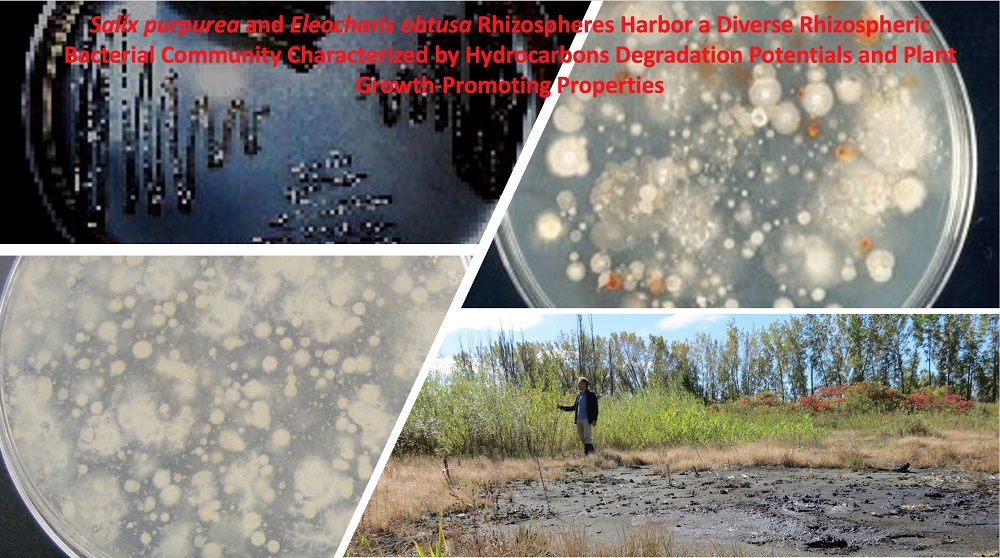Phytoremediation, a method of phytomanagement using the plant holobiont to clean up polluted soils, is particularly effective for degrading organic pollutants, such as alkanes and polycyclic aromatic hydrocarbons (PAHS). However, the respective contributions of host plants and their associated microbiota within the holobiont to the efficiency of phytoremediation is poorly understood. Identification of plant-associated bacteria capable of efficiently utilizing these compounds as carbon source while stimulating plant-growth, is a keystone for phytomanagement engineering in order to improve the efficiency of pollutant removal. In this study, we sampled the rhizosphere and the surrounding bulk soil of Salix purpurea and Eleocharis obusta from the site of a former petrochemical plant in Varennes, QC, Canada. Our objectives were to: (i) isolate and identify indigenous bacteria inhabiting these biotopes; (ii) assess the ability of isolated bacteria to utilize alkanes (dodecane and hexadecane) and PAHs (naphthalene, phenanthrene and pyrene) as the sole carbon source, and (iii) determine the plant growth-promoting (PGP) potential of the isolates using five key traits. A total of 438 morphologically different bacterial isolates were obtained, purified, preserved and identified through PCR and 16S rRNA gene sequencing. Identified isolates represent 62 genera, including taxa such as Acinetobacter, Arthrobacter, Bacillus, Enterobacter, Nocardia, Pseudomonas, Rhodococcus, Streptomyces and Variovorax. Approximately, 32% of bacterial isolates, including Arthrobacter, Pseudomonas, Streptomyces, Enterobacter, Nocardia, Acinetobacter and Microbacterium, were able to utilize all five different hydrocarbons compounds. Additionally, 5% of tested isolates belonging to genera Pseudomonas, Acinetobacter, Serratia, Klebsiella, Microbacterium, Bacillus and Stenotrophomonas possessed all five of the tested PGP functional traits. This culture collection of diverse, petroleum-hydrocarbon degrading bacteria, with multiple PGP traits, represents a valuable resource for future use in environmental bio- and phyto-technology applications, including phytoremediation of petroleum hydrocarbons contaminated soils and phytomanagement of anthropized areas.

